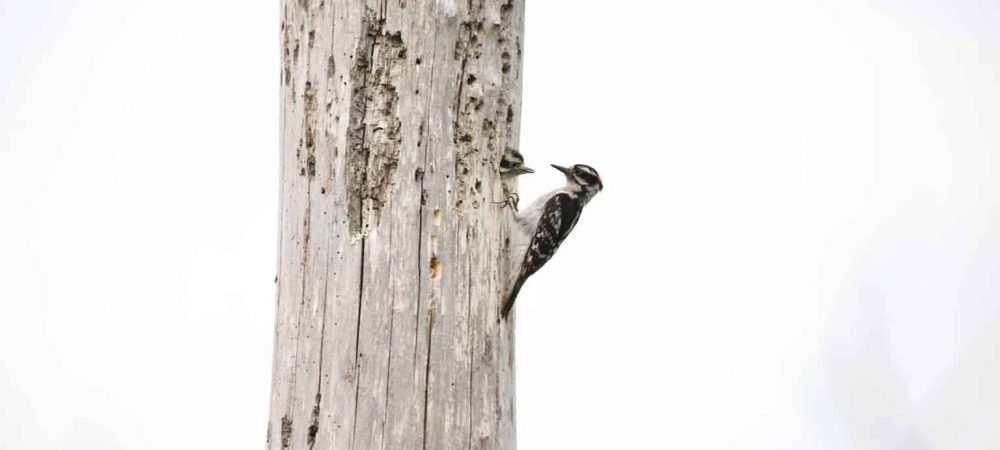
Want to learn more? Take a look at the North American Guide to Woodpeckers
Alaska is a U.S. state on the country’s West Coast, parallel to the Bering Strait.
On the northwest extremity of the coast, Alaska is a semi-exclave of the country as it borders British Columbia. This state has an Arctic climate with long, cold winters and short, cool summers.
Interestingly, the sun doesn’t rise at some points during the winter nor does it set during some points in the summer.
Alaska’s climate is influenced by the cold air from Canada and Siberia. Despite its extreme climate, Alaska’s state park system contains 120 units, and offers a diverse home to wildlife, especially that of woodpeckers.
Woodpeckers are a unique group of birds occupying much of Alaska’s forested areas.
You are most likely to see the Downy Woodpecker while you are least likely to observe the Great Spotted Woodpecker.
Below is a convenient list of the species you will see while in Alaska along with a descriptive biography and where you are most likely to sight these birds.
Take a look at our article on How to Attract Woodpeckers?
What Woodpeckers can be seen in Alaska?
Table of Contents
1. Downy Woodpecker
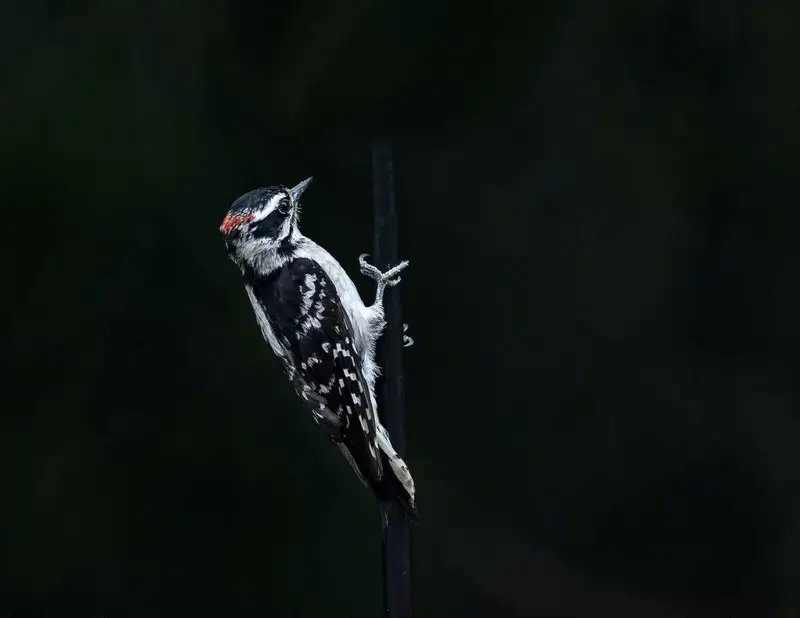
Wingspan
3.27 to 4.13 inches
Weight
0.75 to 1 ounce
Life Expectancy
12 Years
Diet
Insects & Non-insect arthropods
The Downy Woodpecker is the smallest species of woodpecker in North America.
This particular bird is vivid black and white with a white stripe down its back. Downy’s have short bills and black markings and white outer tail feathers.
Downy Woodpeckers are widespread and prefer to take habitat in woodlands and even backyards!
They usually build their nests in trees or shrubs, sometimes 10 to 90 feet high. They like to rest in the cavities of these trees and shrubs.
You can most likely catch sight of Downy Woodpeckers frequenting bird feeders of nectar or pecking away at trees!
2. Hairy Woodpecker
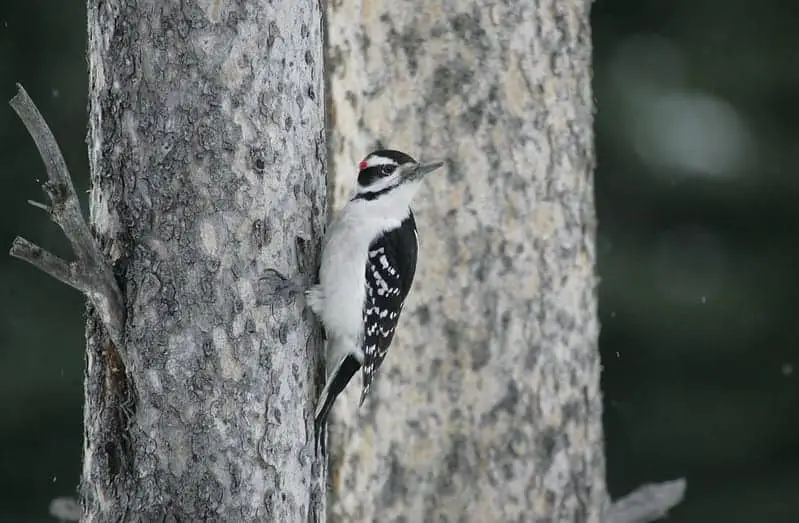
Wingspan
15 inches
Weight
1.4 to 3.4 ounces
Life Expectancy
15 years
Diet
Wood-boring insects & tree sap
Hairy Woodpeckers are medium-sized birds and have a large, thorn-like bill. These birds are black and white with white tail feathers.
These medium sized woodpeckers have dark wings and backs with pale bellies. They have an orangey red patch of feathers on top of their head.
They make their nests in woodlands with medium or larger sized trees. Males are known for their high-pitched, shrill cries that are intended to warn other male birds to stay away.
These birds are year-round residents of southeastern Alaska and can be observed in forested areas of the Tongass National Forest.
You can most commonly see them in backyards, foraging along trunks and main tree branches. Since Hairy Woodpeckers are frequent backyard visitors, they often visit feeders as well.
3. Yellow-bellied Sapsucker
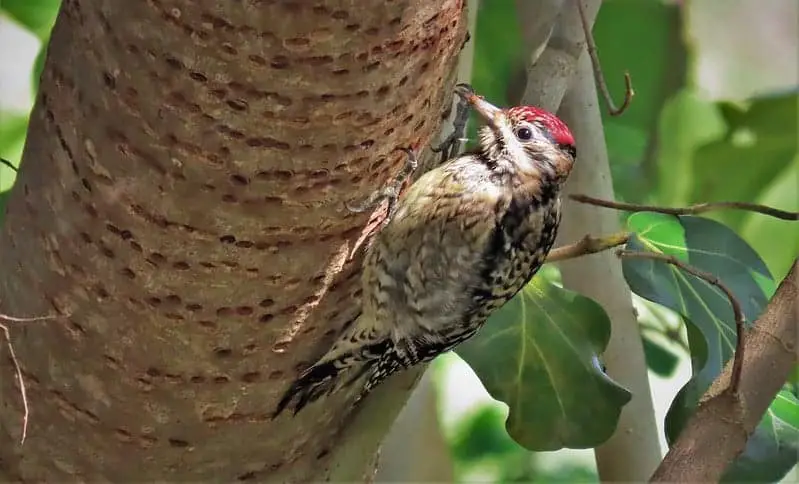
Wingspan
13 to 16 inches
Weight
1.5 to 1.9 ounces
Life Expectancy
7 years
Diet
Tree sap, insects & fruit
Yellow-Bellied Sapsuckers are medium-sized and display a vertical white stripe on their shoulders.
Mature males often display a red forehead and throat while the females have white throats. Immature Yellow-Bellies are a brown-gray color all over.
Yellow-Bellies live in hardwood and conifer forests at very high elevations, nesting in cavities and groves of small trees.
These woodpeckers migrate south in winter to live in open woodlands, and return in the spring. Therefore, you have the best chance at seeing them during the summer.
4. Northern Flicker
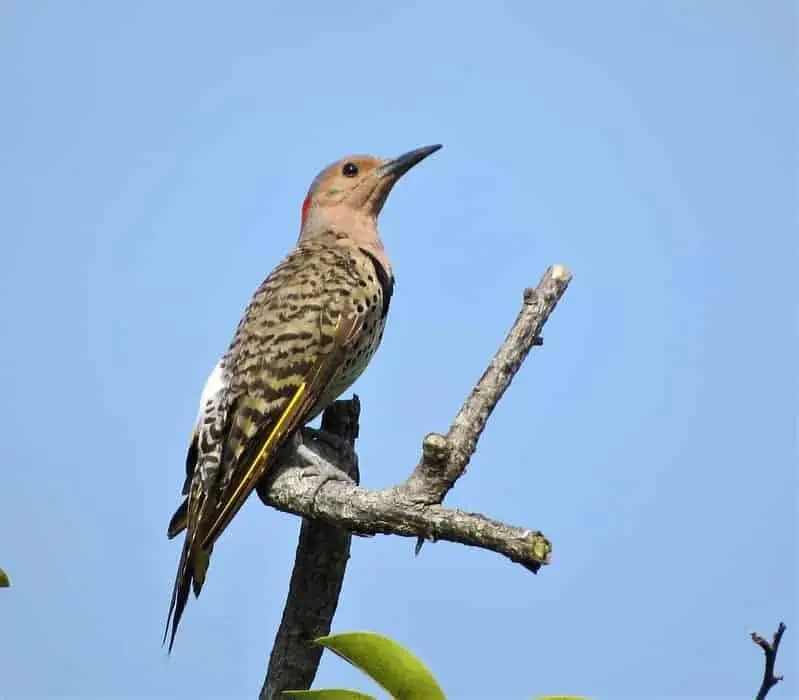
Wingspan
21.3 inches
Weight
6 ounces
Life Expectancy
9 Years
Diet
Insects, seeds, nuts & fruit
Northern Flickers are medium to large sized birds and are brown with black barring on their backs with black spotting on their underbellies.
This species is the most recognizable in the state of Alaska. You can quickly recognize this species due to the unique white feather patterns behind.
The underwings also tend to be yellow or red. It’s also worth mentioning that Northern Flickers sport a black, crescent shape on their breast.
There are actually two races of Northern Flicker–red-shafted, found in Southeast Alaska, and yellow-shafted, prominent through the rest of the state.
Northern Flickers are also easily recognized by their loud “wake-up, wake-up, wake-up” sounding call. You can easily spot this species paying visits to backyards while finding food among grounds. Though they feed in lawns, they prefer to nest in cavities of tall trees.
5. American Three-Toed Woodpecker
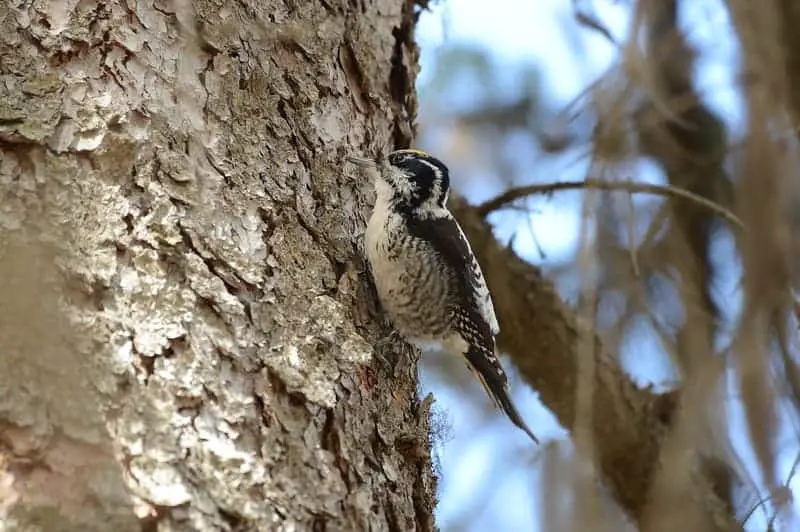
Wingspan
15 inches
Weight
2 ounces
Life Expectancy
6 Years
Diet
Beetle Larvae, insects & fruit
The American Three-Toed Woodpecker is a medium-sized woodpecker similar in appearance to Black-Backed Woodpeckers.
They are dark with white on their backs and heads. It’s interesting to note that their faces are black with white stripes above and below the eye, detailed with speckles of white on their foreheads.
Male Three-Toed Woodpeckers have a distinctive yellow patch on their heads.
Additionally, Alaska Three-Toed Woodpeckers will be lighter than those in eastern states. These birds also prefer coniferous forests at extensive heights, so they may be difficult to spot.
You may have to look for dead trees as signs that point to these woodpeckers, as they appear to take a liking to recently burned areas.
These birds often give a gentle “pweek” sound accompanied by a slow, fading drumming. You will likely see Three-Toed Woodpeckers flaking the bark off of their trees in search of larvae and other food, similar to the Black-Backed Woodpecker.
6. Black-backed Woodpecker
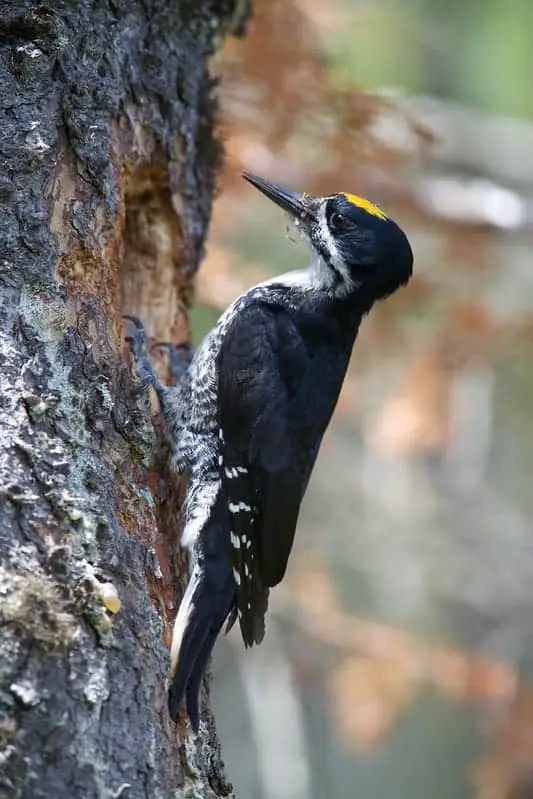
Wingspan
16 inches
Weight
2.5 ounces
Life Expectancy
8 Years
Diet
Wood-boring Beatles, fruit & nuts
Black-backed Woodpeckers are medium-sized woodpeckers, and as their name suggests, they have dark-colored feathers.
Their backs are glossy and have light white markings on their flight feathers.
Their heads are also black and they have a white throat. These species are a bit more uncommon than most others.
They live in coniferous forests among dead trees or burned areas. What sets them apart from other woodpeckers is how they flake bark off of trees similar to the American Three-Toed Woodpecker.
Black-backs have a short call with a distinctive clicking tone. You’re unlikely to find this unique species at bird feeders, but most likely in forested areas on tree trunks in Alaska – it may be difficult however, as they prefer to be inconspicuous.
7. Red-Breasted Sapsucker
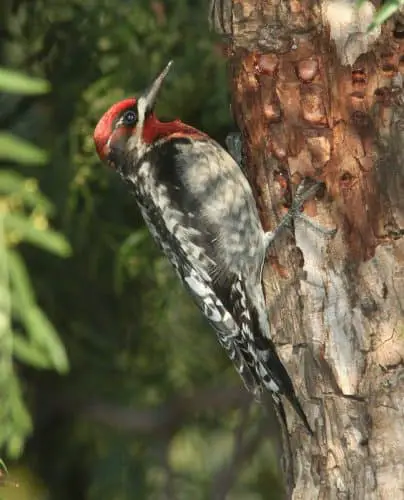
Wingspan
40cm
Weight
55g
Life Expectancy
2-3 Years
Diet
Insects
Red-Breasted Sapsuckers are medium-sized woodpeckers with stunning colored feathers, displaying a redhead and breast, with a white slash on their shoulder.
From time to time there are some indistinct patterns of black and white on their heads. Otherwise, these birds are generally black.
Though Red-Breasted Sapsuckers migrate in the winter, these birds are a native Alaska species. They like to spend their summers in high elevation forests close to water such as rivers and streams.
Like most woodpeckers, they nest in cavities of dead trees and branches. One distinctive feature of these birds is that they drill neat and shallow holes into trees to drain sap and insects.
You can most likely see this species in the spring, at high altitudes building their nests.
8. Great Spotted Woodpecker
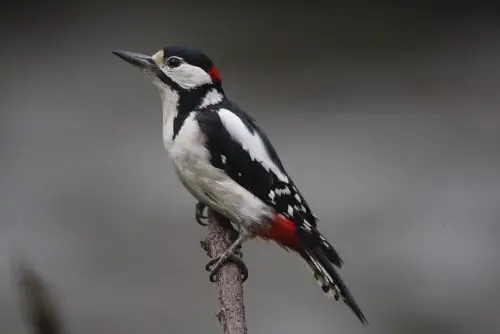
Wingspan
35cm
Weight
85g
Life Expectancy
11 Years
Diet
Insects
The Great Spotted Woodpecker is a medium-sized woodpecker with black and white feathers and a red patch on the underbelly.
Males and juveniles have red markings on their necks and heads.
This species is not particularly common in Alaska, however, they have been spotted various times to make sightings possible.
They take habitat in all types of forests, woodlands, and gardens where you have the best chances of seeing them.
You can spot them feeding on trunks and large tree branches, or occasionally visiting feeders.

More Articles.
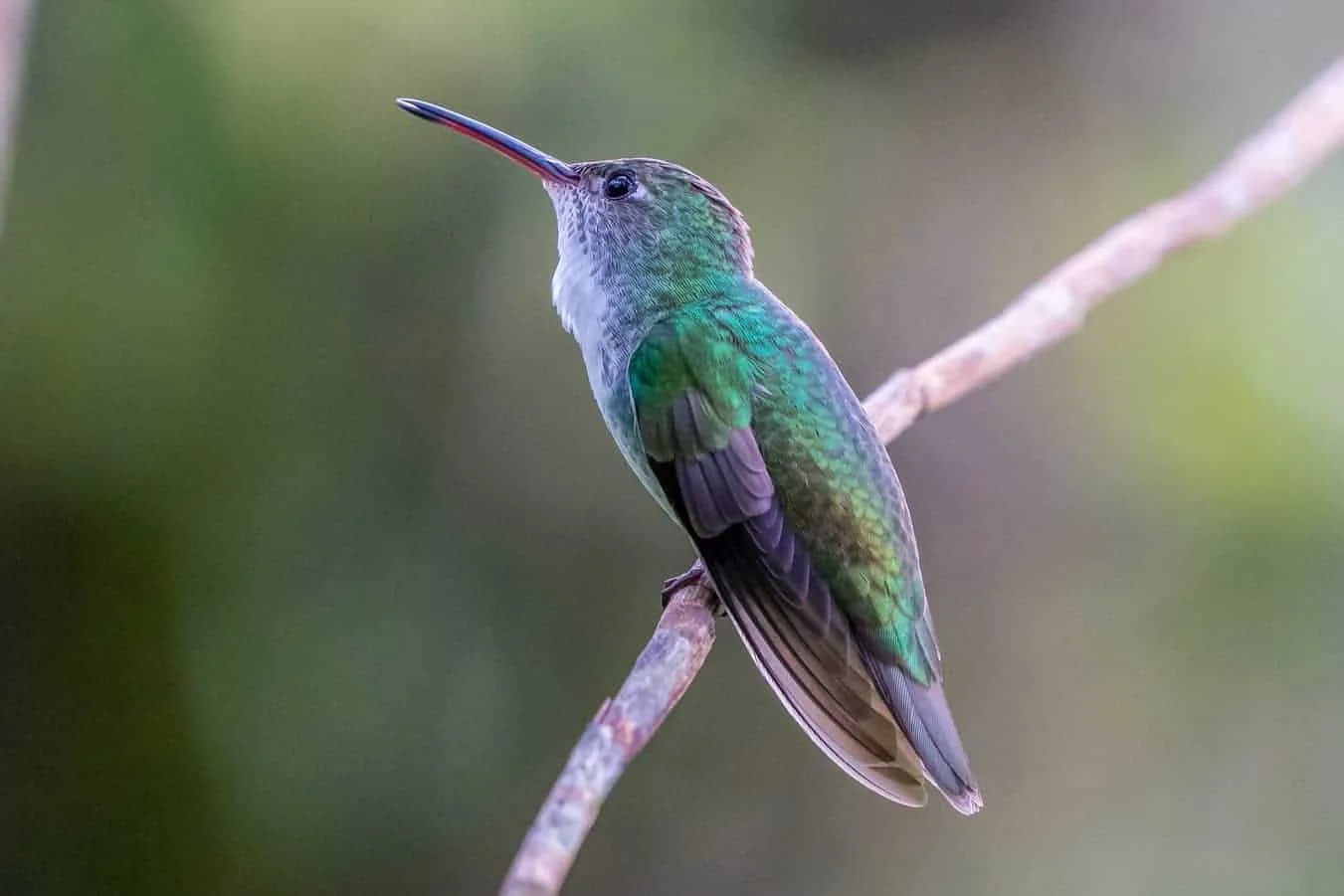
How often do Hummingbirds sleep?
Have you ever watched a hummingbird and envied it for its energy? A simple glance
How to Attract Cardinals to Your Backyard: 7 Proven Tips
Attracting cardinals to your backyard is simple when you focus on their needs: food, water,
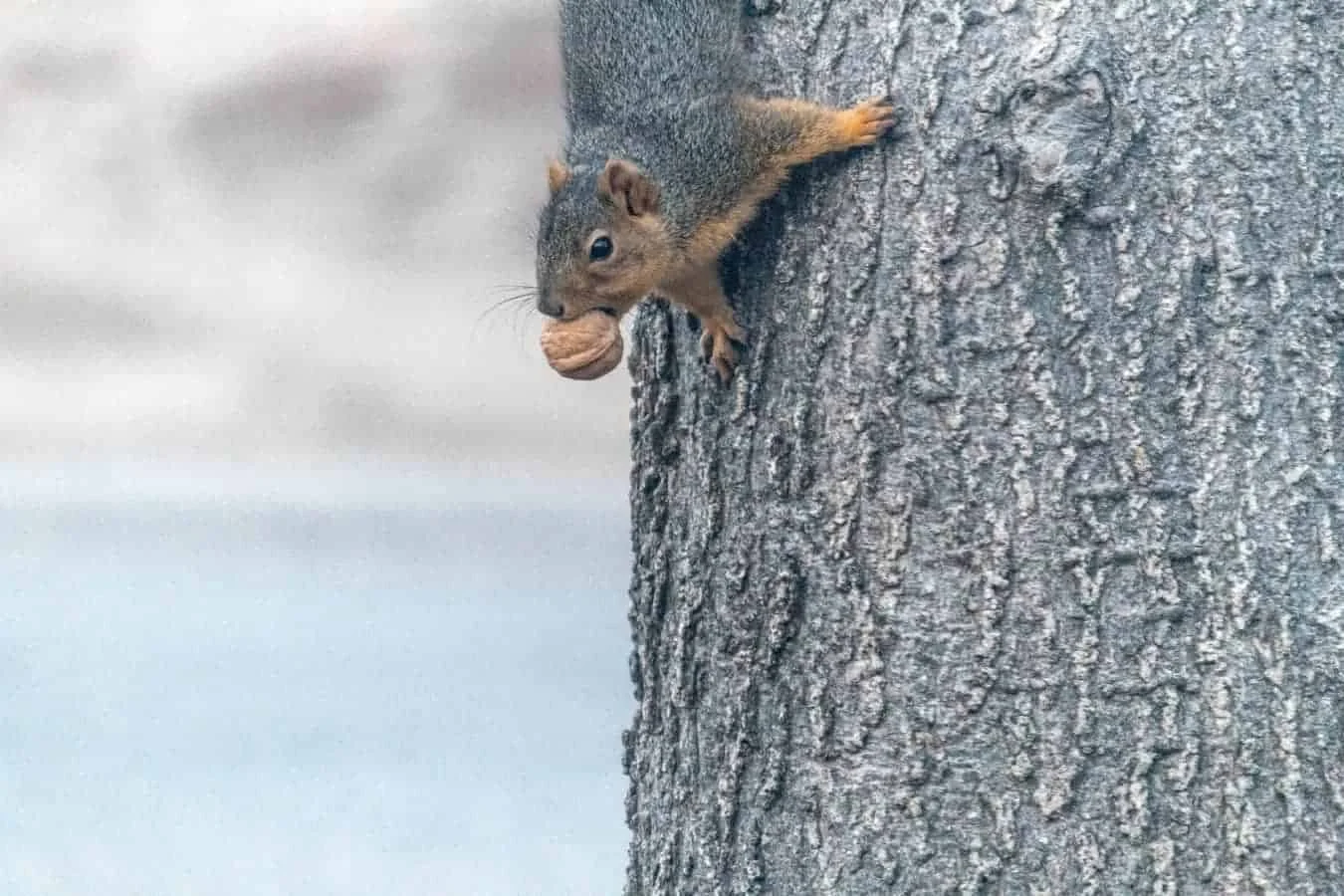
Best Squirrel Proof Feeder 2020
You want to attract and feed birds in your own backyard. You spent hours researching

About Us
We are avid bird-watchers who recently retired, allowing us more time to travel the world. Fortunately, we have managed to visit numerous countries around Europe, Asia, and America. Watching and photographing birds has been a passion for many years and we are making the most of the extra time on our hands!
